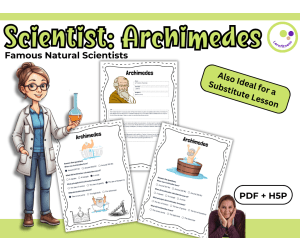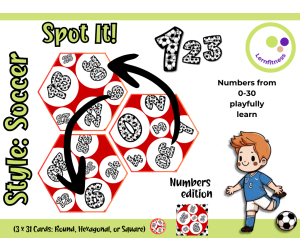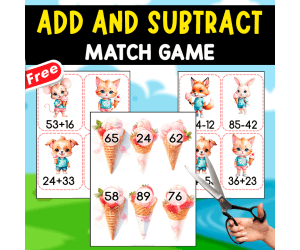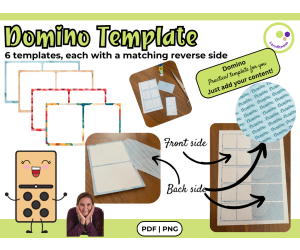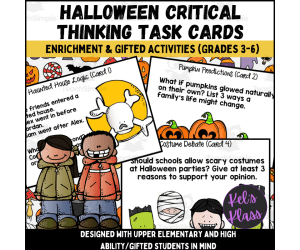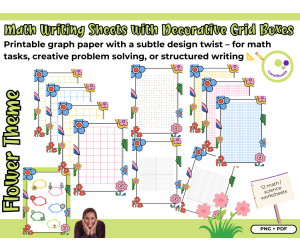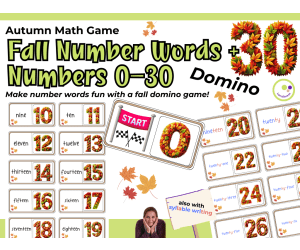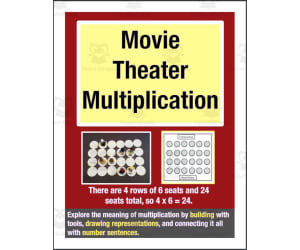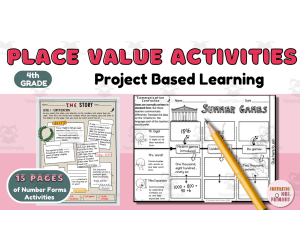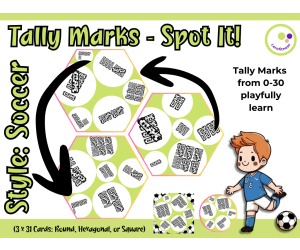2,738 products added recently
Math Projects
Support mathematical understanding with projects that apply concepts to real-life scenarios. This collection includes statistical studies, geometry in design, and budget planning exercises. By integrating these math projects into your teaching, you can make math relevant and engaging.
Fall Number Flashcards – 0–30 Memory and Sequencing Games
Holiday & Seasonal, ELA, Special Resources, Special Education Needs (SEN), Seasons, Fall, Math, Early Math, Numbers, Counting, Preschool, Grade 1, 2, 3, 4, Activities, Games, Worksheets & Printables, Quizzes and Tests, Teacher Tools, Quizzes, Projects, Flashcards, Word Problems, Centers
Fall Numbers Memory Game Bring autumn fun into your math lessons! This set of fall-themed flashcards gives students repeated practice with numbers from 0 to 30 in a playful and flexible format. I first made these for my kindergarten class, when many of my students still needed support with recognizing numbers and putting them in the right order. The cards worked well because they could be used in so many different ways without having to prepare something new each time. There are 228 cards in total, divided into six full sets with different colored borders. The colors make it easy to keep groups organized, since each table can use a separate set without mixing the cards together. Each card shows a single number in a large, clear font, which helps beginning learners and also supports students who struggle with visual distractions. The cards can be used for memory or matching games, where students flip over two at a time and try to find pairs. Another favorite activity in my class has been sequencing: students work together to lay the cards out from 0 to 30. For more active lessons, we sometimes spread the cards on the floor and have students “walk” the numbers in order, which adds movement to the practice. I also use the cards as simple flashcards, holding them up for quick recognition drills, or handing one card to each student and asking the group to line up in numerical order. With partners, students have created their own math problems using the numbers they draw, which adds a layer of challenge for more advanced learners. Differentiation is built in, since you can choose how many numbers to include. With beginners, I usually work with 0–10. As students grow more confident, I extend to 0–20 and eventually the full 0–30. Adding a timer or encouraging students to say each number out loud when they play can make the activity even more engaging. Preparation is straightforward: print the set you want, cut the cards, and laminate if you plan to reuse them. I keep each set in small envelopes or bags so they are ready for math centers, group games, or quick warm-ups. The fall design adds a seasonal touch, but the number practice is useful all year long. Warm regards, Lernfitness Did You Know? I teach with a certified therapy dog, and together we focus on creating a positive and inspiring learning environment.
Author Lernfitness
Rating
Tags Foreign Languages, Game, Educational Card Games, Elementary, Fall, Memory, Numbers, Counting, Autumn, Math
Archimedes – Scientist Profile and Comprehension Activities PDF + H5P
Life Sciences, Science, STEM, Social Studies, Biographies, Inventors, Basic Science, Physics, Chemistry, Math, Grade 6, 7, 8, 9, Worksheets, Worksheets & Printables, Quizzes, Quizzes and Tests, Teacher Tools, Projects, Activities
Archimedes – Scientist Profile and Comprehension Activities Informational Text, Student Tasks & Quiz (PDF, DOCX, H5P) ⚖️🧠 This resource introduces students in grades 7–10 to Archimedes, one of the most influential figures in early science. Best known for his work on buoyancy and the principle of density determination for irregular objects, Archimedes connects classical thought with key scientific concepts still taught today. The material combines factual reading with structured tasks. It can be used flexibly: in science lessons, for cross-curricular units, or as an easy-to-run activity in substitute teaching. Students read a short informational text, fill in a profile worksheet, complete quiz questions, and – if time allows – create their own questions to exchange with a partner. What’s included: Informational text about Archimedes Profile worksheet for comprehension and reflection Answer key for the profile Quiz questions with solutions Two extension tasks: – Create your own questions – Exchange and answer a partner’s questions File formats: – Printable PDF – Editable DOCX (text only) – Interactive H5P version (text-based, no images) In the classroom: I’ve used this kind of resource in regular science lessons as well as in non-specialist cover lessons. The tasks are clear enough for independent work and provide a good balance between reading, writing, and critical thinking. The H5P version allows for easy digital use on learning platforms, especially when students work from home or on devices in class. It’s also great for differentiation: stronger students can work on their own questions, while others use the glossary or reread sections to complete the basics. Whether you use it to introduce Archimedes in physics or to practice nonfiction reading strategies, this is a flexible resource that’s ready to go with little prep. Have fun exploring the world of science with your students! Warmly, Lernfitness Did You Know? I teach with a certified therapy dog, and together we focus on creating a positive and inspiring learning environment.
Author Lernfitness
Rating
Tags Science, Famous Scientists Lesson, H5P, Interactive Science Exercises, STEM, History, Scientists, Chemistry, Archimedes, Scientific Concepts
Silly Dragon Crafts - Coloring - Bookmarks - Geometric Designs
Creative Arts, Geometry, Math, Shapes, Early Math, Patterns, Kindergarten, Preschool, Grade 1, 2, 3, Crafts, Activities, Centers, Projects, Coloring Pages, Worksheets, Worksheets & Printables
These dragons are so silly and so much fun for kids to color. As is this entire dragon crafts activity pack. Kids absolutely love these dragons as well with their simple, thick outlines, they are a great way to give your students a break from their work and also be used as a reward for good behavior and an assignment done well. Since so many kids nowadays love dinosaurs and dragons, I thought it would be fun to create a dragon crafts activity pack. The simple drawings are perfect for preschoolers and prereaders. The bookmark designs, which are smaller and more complex, can be enjoyed by older students as well. There are five different dragons on 8.5 x 11 for a total of 10 posters - 5 of the dragons contain a colored example that children can follow to help with color recognition. These do not have a color border. The other 5 dinosaurs are black and white by themselves and contain a colored border. Once colored, the posters can be used to decorate bulletin boards, classrooms, and home refrigerators. They could even be framed and given as gifts! They can be printed and used again and again! In addition, there are 6 double-sided bookmarks with different geometric designs, patterns, and dragon pictures for coloring and printing. Geometry is math, so without realizing it, when your students color in the geometric designs, they are in essence practicing math skills. You can ask your students to identify the shapes and patterns on the bookmarks while they are coloring. You can also teach about shapes and patterns while they are keeping their hands busy coloring them. This can be super helpful in reducing distractibility. The geometric designs are great for developing familiarity with shapes and patterns. Plus, bookmarks make great gifts and encourage reading. The format is pdf downloadable and there are 15 pages, including the cover page. There is no need for an answer key as this dragon craft activity pack is pure fun with a little arts and crafts and math snuck in.
Author Homeschooling Dietitian Mom
Tags Dragon, Dragon Craft, Geometry, Dragon Coloring Sheet, Color Poster, Math, Crafts, Craft Activities, Cute Bulletin Board, Groovy Bulletin Board
High School Financial Literacy: Stock Market Project- Investing
Finance, Life Studies, Home Economics, Decimals, Math, Money, Addition and Subtraction, Statistics, Special Resources, Life Skills, Grade 9, 10, 11, 12, Worksheets & Printables, Worksheets, Projects, Activities
This engaging and useful stock market project can teach your high school students all about several financial literacy topics: investing their savings, buying shares (stocks) in a company, calculating their gains and losses, investment volatility, calculating the mean, length of investment (time horizon) and more! How to Use: 1. On Day 1, have your students complete the first worksheet. They can use the included website to look at a variety of different stocks and their historical performances. They will divide up their thousand dollar investment between two different companies, and calculate how many shares the will be able to buy from each company they picked to invest in. 2. Then, schedule three separate classes over the next month or so to check on the stocks. Each time, your students will record that day's current share price and calculate their shares' current investment value. 3. On the final day, your students will calculate how much money they have gained or lost during the project. Then, each student will provide their gain or loss which will allow the calculation of your class's average stock performance during the project. [You can project the included table on a board and each student can fill in their gain or loss.] 4. Next, students will find out how the stock market performed on average during the timeframe of the project. They will utilize data from the S&P 500 to see if their class's average was better or worse than the stock market itself. 5. Finally, students will write a reflection about this project. A variety of prompts are included to help your students think about volatility, lower risk of ETFs, and the importance of thinking about how long one can invest their money. Sample calculations are provided for each step to help model for your students. What's Included: 6 Page PDF- Ready to Print and Use! 1) Teacher Instructions 2) Day 1: Buy Stocks 3) Check on Stocks 3 Times 4) Calculate Gains, Losses, and Class Average 5) Compare to US500 Performance 6) Written Reflection
Author Grace Under Pressure
Tags Life Skills, Investing, Invest, Stock Market, Financial Literacy, Personal Finance, Personal Finance Worksheets, Financial Literacy Worksheets, Math Project, Applied Math
Math Counting Game – Soccer Style | Learning for Elementary & ESL
Montessori, Math, Numbers, Early Math, Holiday & Seasonal, Addition and Subtraction, Addition, Subtraction, Basic Operations, Counting, Preschool, Grade 1, 2, 3, 4, 6, Activities, Games, Worksheets & Printables, Task Cards, Quizzes and Tests, Teacher Tools, Quizzes, Projects, Flashcards
Math Counting Game – Soccer Style | Learning for Elementary & ESL Similar to Dobble / Spot it! A fast-paced matching game for practicing numbers and visual attention ⚽🔢 This printable math game brings energy and movement into your classroom while helping students build number recognition and quick comparison skills. Based on the well-known "Spot it!" or "Dobble"-style format, this version adds a fun soccer theme that makes counting and comparing numbers more engaging – especially for younger learners. The game works by matching identical images between cards – and there’s always exactly one match per pair. Students need to stay focused, scan quickly, and name what they see. While it feels like a game, they’re actually reinforcing visual perception, number familiarity, and quick decision-making. What’s included: 93 cards in total Three full versions of the game, each with 31 cards Shapes: round, square (easy to cut), and hexagonal formats PDF for printing and optional laminating How I use it in class: This game fits well as a math center, for partner or small group work, or even during indoor break times. I’ve also used it as a warm-up or transition activity – it gets students thinking and interacting right away. You can adjust the pace depending on your group: competitive rounds for fast learners, or slower matching for quieter moments. Students love the soccer theme, and because the same core set is provided in three different formats, I can choose what’s easiest to prep depending on the time I have. The game supports social interaction, cooperation, and focus – and since students often already know how this kind of game works, the learning curve is minimal. Just print, cut, and you’re ready to go. Warm regards, Lernfitness Did You Know? I teach with a certified therapy dog, and together we focus on creating a positive and inspiring learning environment.
Author Lernfitness
Rating
Tags Numbers, Math, EFL, ESL, Foreign Languages, Game, Spot It, Educational Card Games, Number Words, Soccer
ADDITION AND SUBTRACTION | INTERACTIVE GAME FOR MATCHING
Early Math, Math, Numbers, Addition and Subtraction, Addition, Subtraction, Early Learning, Elementary, Homeschool Resources, Not Grade Specific, Games, Activities, Projects, Flashcards, Worksheets & Printables
ADDITION AND SUBTRACTION | INTERACTIVE GAME FOR MATCHING GENERAL DESCRIPTION OF THIS PRODUCT: What format is it in (digital, printable, PDF, A4, letter)? This fun and engaging resource is designed in A4 format and has been converted to PDF, making it easy to use and carry anywhere: PDF Is the design in full color, black and white, or mixed? This document includes both black and white and color versions, making it more creative and appealing. You also have the freedom to print it in whichever style you prefer: COLOR What type of material is it (book, workbook, activity pack, posters, flashcards)? EDITORIAL ARENAS EDUCATIVAS creates a variety of materials such as packs, worksheets, games, and assessments. This resource belongs to one of those categories: GAME For what ages, levels, or grades is it designed? My specialty is creating educational resources for children, especially for preschool (ages 3–5) and primary (ages 6–12). Sometimes, I also create Spanish resources for learners of all ages. ABOUT THE AUTHOR: At EDITORIAL ARENAS EDUCATIVAS, we specialize in designing high-quality educational materials. We want every child to discover that learning can be both entertaining and creative. I invite you to explore my educational store and discover the wide collection of resources available for your classroom or home. BASIC INFORMATION OF THIS MATH RESOURCE: The name of the document: Addition and Subtraction Game The total number of pages: 10 pages The format (PDF, Word, PPT): PDF Whether it is in color or black and White: Color. SECONDARY OR EXTRA INFORMATION OF THIS RESOURCE: Who can use it best (teachers, parents, students, therapists, homeschoolers)? We are all part of education. Whether you are a teacher, parent, student, or therapist, this document can adapt perfectly to your learning goals, depending on your creativity. What additional materials are recommended (printer, scissors, markers, etc.)? The more immersed students are in learning, the greater their results. That’s why it’s ideal to complement this resource with pencils, crayons, markers, and even other art tools. What outcome, benefit, or transformation can the user expect? With this fabulous resource, students will first understand that learning is easy and fun, and second, they will strengthen their knowledge and skills.
Author EDITORIAL LAURA EDUCA
Rating
Tags FREE, FREE RESOURCES, MATH, MATH RESOURCES, ADDITION, SUBTRACTION, ADDITION AND SIBTRACTION
Blank Domino Templates – With Matching Backs for Easy Printing
STEM, Science, Montessori, Common Core, Creative Arts, Graphic Arts, Resources for Teachers, Classroom Management, Math, Holiday & Seasonal, Grade 6, 7, 8, Activities, Games, Worksheets & Printables, Task Cards, Quizzes and Tests, Teacher Tools, Flashcards, Escape Room, Projects, Templates
Blank Domino Templates – With Matching Backs for Easy Printing A creative resource for designing your own domino games – in class or at home These printable domino templates offer a simple and flexible way to create your own domino-style learning games. Whether you’re planning a classroom activity, a subject-specific matching task, or even a commercial resource, this set makes the design process much easier. The download includes 6 ready-to-use templates, each laid out on a single A4 page in PDF format. Each domino comes with a color-matching reverse side labeled “Domino” – so once printed, you can fold and glue the sheet to create double-sided domino cards that feel polished and consistent. What’s included: 6 different blank domino layouts (PDF) Coordinated reverse sides for each template PNG versions of fronts and backs for flexible digital design Instructions for use (folding, gluing, optional laminating) Ideas for classroom use: I've used these templates in lessons where students create their own review materials. For example, after a unit on chemical elements or vocabulary sets, students design their own dominoes in pairs – matching concepts, definitions, or images. It’s a nice way to check understanding and encourage collaboration. Because the structure is already in place, the focus stays on content, not formatting. For digital or printable projects: You can insert your own content in programs like PowerPoint, Keynote, or Canva. Just add images or text boxes to the template and print. If you plan to laminate them, they’ll hold up well for repeated use. Commercial use is allowed under specific terms: the templates must be used as part of your own content, not shared in their original form. Attribution is requested (details provided in the download). A flexible tool for anyone who enjoys designing learning games – or wants to hand over the creative part to students! 📍 Best wishes, Heike from @Lernfitness Did You Know? I teach with a certified therapy dog, and together we create a positive and welcoming learning environment. 🐶
Author Lernfitness
Rating
Tags Educational Card Games, STEM Science Matching Game, Game, Domino, Differentiation, Template, Blank Domino Templates, Editable Domino Game, DIY Classroom Game, Matching Game
SUPER BUNDLE | Multiplication Activities 1-DIGIT | +180 PAGES
Math, Multiplication and Division, Multiplication, Early Learning, Elementary, Homeschool Resources, Middle School, Not Grade Specific, Games, Activities, Projects, Workbooks, Worksheets & Printables, Worksheets
SUPER BUNDLE | Multiplication Activities 1-DIGIT | +180 PAGES THIS SUPER PACK HAVE MORE THAN 180 PAGES WITH ACTIVITIES OF THE MULTIPLICATION BY 1-DIGIT. INFORMATION OF THE AUTHOR: Thank you for choosing EDITORIAL ARENAS EDUCATIVAS! Our mission is to deliver a variety of learning resources that make education enjoyable and effective for children. Don't forget to visit our store to explore products for reading, writing, math, and Spanish language skills. MAIN DESCRIPTION OF THIS RESOURCE: 1) Is the material designed in color or black and white? This document has been designed in color (if required) or is sometimes created in black and white to make your learning experience easier. 2) What age range is appropriate for this resource? Our publishing company is dedicated to creating resources for young children between the ages of 3 and 12, as well as for older students or anyone who needs them. 3) What keywords best describe this resource? We can tag this product with keywords such as: teaching resource, resources, materials, teaching materials, worksheets, educational worksheets, worksheets for children. 4) What instructions should I follow for proper printing? I recommend that you first download this document, then check if your printer is capable of printing, and also verify that you have the appropriate document size. SECONDARY AND COMPLEMENTARY INFORMATION: 1) What recommendations are there for making the most of this resource? To make the most of this resource, I recommend first analyzing it, then looking at the specific topic your student needs to learn and assess whether my resource addresses it. I also ask you to consider how you will print it. 2) Is this material up to date with the latest educational changes? Yes, this material primarily addresses all learning theories about children, which tell us that children should learn in an educational and fun way. 3) What printing format guarantees the best results? I recommend printing this document in PDF format. I would also ask you to carefully check whether you have a color or black and white printer. 4) What recognition or endorsement does the author of this material have? This document has been prepared by EDITORIAL ARENAS EDUCATIVAS, and we guarantee that this document has been carefully selected, ensuring that your students have a fun and successful learning experience.
Author EDITORIAL LAURA EDUCA
Rating
Tags FREE, FREE RESOURCES, BUNDLE, PACK, MULTIPLICATION, DIVISION, MATHS, MATH RESOURCES
Mathematics Binder Covers – Templates for Classroom Use
Science, STEM, Basic Science, Special Resources, Montessori, Classroom Management, Resources for Teachers, Math, Physics, Technology, Homeschool Templates, Grade 6, 7, 8, 9, Worksheets, Worksheets & Printables, Teacher Tools, Projects, Activities, Workbooks, Drawing Templates & Outlines, Templates, Graphic Organizers, Classroom Decor
Mathematics Binder Covers – Templates for Classroom Use Organize your Math handouts, notes, and units with visual clarity Simple and flexible templates to help organize your Mathematics materials In my math classes, it can be a challenge to keep things organized - especially when it comes to multiple units, lab notes, worksheets and review materials. To make it easier for my students and myself, I designed these simple binder sleeves. There are 12 different pages. The covers have a clean, colorful blob layout that is friendly but not distracting. I usually print them out and use them as cover sheets or as dividers in folders for students or teachers. They also work well for digital learning environments, e.g. as section covers in PDF files or on classroom platforms. I like that the color scheme allows students to quickly find what they are looking for, and it brings a little more structure to a subject that is often riddled with formulas and technical terms. When used as cover sheets, students can choose their favorite color for their cover sheet. This resource is handy - and has saved me a lot of time in lesson preparation and follow-up. What’s included: 12 math-themed cover pages different colors zu choose as a cover sheet as a divider between the individual Mathematics topics I've printed these on colored paper for my own binder and also used them digitally in student notebooks. Works well for both teacher organization and student-facing materials. 📍 Best wishes, Heike from Lernfitness Math teacher (Chemistry teacher, Biology teacher) in Germany Did You Know? I teach with a certified therapy dog, and together we create a positive and inspiring learning environment. 🐶✨
Author Lernfitness
Rating
Tags Science, STEM, Binder, Cover Sheet, Template, Organizer, Organize, GoodNotes, Mathematics, Math
LEARNING THE TIME | 8 FREE POSTERS
Measurements, Math, Time, Early Learning, Elementary, Homeschool Resources, Not Grade Specific, Pre-K, Escape Room, Activities, Games, Projects, Drawing Templates & Outlines, Worksheets & Printables
LEARNING THE TIME | 8 FREE POSTERS With this funny math resource, your students will be able to learn the time. SUMMARY OF THIS PRODUCT: What is the name of the document?: How many pages does it include?: In what format is it available (PDF, Word, PPT)?: Is it in color or black and white?: TAGS: TIME, EARLY MATH,POSTERS,FLASHCARDS. MAIN DESCRIPTION OF THIS PRODUCT: What is the name of the product? Hello! Thank you so much for being interested in this beautiful and fabulous product that you can use with your children, both at school and at home. The name of this fabulous product is: How many pages does it include? This educational document, carefully created and in some cases compiled, has the following number of pages: What format is it in (A4, letter, digital, printable)? This educational resource is designed in A4 format and PDF, so you will have no difficulties printing it and it will also stay well-protected. SECONDARY AND COMPLEMENTARY INFORMATION OF THIS MATH RESOURCE: What learning area does it focus on? This and all my resources focus on children’s essential learning, such as math and literacy. Occasionally, I also create resources for Spanish. What will students learn or practice with it? With this educational resource, children will be able to practice basic skills in math and literacy. Teachers can also adapt it to other learning areas, since learning is multidisciplinary. Who will benefit the most from this resource (teachers, families, students, therapists)? I strongly believe education involves many people—teachers, parents, and even therapists. That’s why this resource is open to anyone involved in the learning process. Is any additional material needed to work with it? Sometimes yes, such as pencils, crayons, markers, and scissors. It all depends on how deeply you want your students to engage with the activities.
Author EDITORIAL LAURA EDUCA
Rating
Tags FREE, FREE RESOURCES, MATH, TIME, EARLY MATH, OCLOCK
Halloween Critical Thinking Task Cards (Math, Science, Language)
ELA, Math, Science, Grade 3, 4, 5, Activities, Projects, Worksheets & Printables, Task Cards
Challenge your students with Halloween Critical Thinking Task Cards . This set is perfect for enrichment, gifted learners, fast finishers, or class challenges! Seasonal fun meets rigorous creative thinking for grades 3–6. These Halloween Critical Thinking Task Cards were designed with gifted and advanced learners in mind , each card combines seasonal fun with higher-order thinking skills! Skills Covered: Logic puzzles Problem-solving Math reasoning & multi-step word problems Debate, analogy, and open-ended writing prompts STEM connections and real-world application What’s Included: 12 print and cut Halloween Critical Thinking Task Cards Answer Key: solutions and discussion prompts Teacher Talk Page : tips for setup and classroom use Student Directions Page : independent or small-group work Ways to Use These Task Cards: Morning work Enrichment for gifted and advanced students Early finisher activities Math/ Literacy centers Socratic seminar discussion starters Journal prompts Halloween centers or stations Why Teachers Love These: Low-prep : print, cut, and use immediately Flexible for independent, partner, or whole-class use Encourages multiple solutions and deeper thinking Easy differentiation in mixed-ability classrooms Typically used in grades 3rd, 4th, 5th, and 6th , these task cards bring Halloween fun + academic rigor to your classroom. Use them year after year to compare the creativity as your classes change! Keywords: halloween critical thinking task cards, fall enrichment activities, gifted student halloween activities, upper elementary fall logic puzzles, fall early finisher activities, fall STEM and critical thinking, halloween classroom activities upper elementary
Author Kel's Klass
Rating
Tags Gifted Enrichment, Autumn Critical Thinking Task Cards, Fall Classroom Activities, Upper Elementary Logic Puzzles, Early Finishers, Critical Thinking, Enrichment For Gifted Students, Halloween Critical Thinking Task Cards, Halloween Gifted Enrichment, Halloween Classroom Activities
FREE MATH GAME | Add and subtract with the Pinguin
Addition and Subtraction, Math, Addition, Subtraction, Early Learning, Elementary, Homeschool Resources, Not Grade Specific, Pre-K, Games, Activities, Escape Room, Projects
FREE MATH GAME | Add and subtract with the Pinguin BASIC INFORMATION OF THIS MATH GAME: · Document Title: Math game of addition and subtraction · Number of Pages: 17 · File Format (PDF, Word, PPT): PDF · Color or Black & White: Color MAIN DESCRIPTION OF THIS RESOURCE: For what ages, levels, or grades is it designed? K-3 My specialty is creating educational resources for children, especially for preschool (ages 3–5) and primary (ages 6–12). Sometimes, I also create Spanish resources for learners of all ages. What subject, skill, or topic does it cover? ADDITION AND SUBTRACTION. This resource is designed to cover essential learning areas for children, generally literacy and math. What learning objectives does it achieve? This document fulfills a playful objective—it’s meant to be attractive and engaging for children. At the same time, it ensures that students learn or reinforce their knowledge. Who can use it best (teachers, parents, students, therapists, homeschoolers)? We are all part of education. Whether you are a teacher, parent, student, or therapist, this document can adapt perfectly to your learning goals, depending on your creativity. READ TO: How many pages are included in this resource? This fabulous document contains the following number of pages: 17 What size is it designed in (A4, letter, etc.)? PDF A4 This resource is designed in A4 format and compiled as a PDF. This makes downloading and printing simple and convenient, and PDFs are also easy to store and carry anywhere. Is the material in color or black and white? COLOR This pedagogical document comes in both black and white and color. This makes it more attractive for your learning sessions, but you have the freedom to choose how to print it. THANK YOU SO MUCH FOR PREFERRING MY PRODUCTS! INFORMATION ABOUT ME: Hi there! We are EDITORIAL ARENAS EDUCATIVAS 🎓✨. We love designing educational materials that make children’s learning joyful, dynamic, and motivating. I invite you to visit my educational store, explore the variety of resources available, and find the perfect one for your students.
Author EDITORIAL LAURA EDUCA
Rating
Tags FREE, FREE RESOURCES, GAMES, GAME, MATH, MATH RESOURCES, ADDITION, ADDITION AND SUBTRACTION, SUBTRACTION
Fall Critical Thinking Task Cards (Math, Science, Language Skills)
ELA, Math, Science, Grade 3, 4, 5, Activities, Projects, Worksheets & Printables, Task Cards
Challenge your students with Fall Critical Thinking Task Cards . This set is perfect for enrichment, gifted learners, fast finishers, or class challenges! Seasonal fun meets rigorous creative thinking for grades 3–6. Critical Thinking Task Cards were designed with gifted and advanced learners in mind , each card combines seasonal fun with higher-order thinking skills! Skills Covered: Logic puzzles Problem-solving Math reasoning & multi-step word problems Debate, analogy, and open-ended writing prompts STEM connections and real-world application What’s Included: 12 print and cut Fall Critical Thinking Task Cards Answer Key: solutions and discussion prompts Teacher Talk Page : tips for setup and classroom use Student Directions Page : independent or small-group work Ways to Use These Task Cards: Morning work Enrichment for gifted and advanced students Early finisher activities Math/ Literacy centers Socratic seminar discussion starters Journal prompts Fall-themed classroom challenges Why Teachers Love These: Low-prep : print, cut, and use immediately Flexible for independent, partner, or whole-class use Encourages multiple solutions and deeper thinking Easy differentiation in mixed-ability classrooms Typically used in grades 3rd, 4th, 5th, and 6th , these task cards bring autumn fun + academic rigor to your classroom. Use them year after year to compare the creativity as your classes change! Keywords: fall critical thinking task cards, fall enrichment activities, gifted student fall activities, upper elementary fall logic puzzles, fall early finisher activities, fall STEM and critical thinking, autumn classroom activities upper elementary
Author Kel's Klass
Rating
Tags Fall Critical Thinking Task Cards, Gifted Enrichment, Autumn Critical Thinking Task Cards, Autumn Classroom Activities, Fall Classroom Activities, Upper Elementary Logic Puzzles, Early Finishers, Critical Thinking, Enrichment For Gifted Students, Fall Gifted Enrichment
FREE FLAP BOOK OF MULTIPLICATION | 1 - 10
Division, Multiplication and Division, Math, Multiplication, Early Learning, Elementary, Homeschool Resources, Not Grade Specific, Pre-K, Games, Activities, Projects, Worksheets, Worksheets & Printables
FREE FLAP BOOK OF MULTIPLICATION | 1 - 10 SUMMARY OF THIS PRODUCT: What is the name of the document?: FLAP BOOK 1-10 How many pages does it include?: 10 In what format is it available (PDF, Word, PPT)?: PDF Is it in color or black and white?: BLACK AND WHITE TAGS: Multiplication, Flap Book, Math, Math resources. MAIN DESCRIPTION OF THIS PRODUCT: What is the name of your product and what makes it special? This beautiful product is called “FLAP BOOK OF THE MULTPLICATION”, and it is very special because it was carefully designed or compiled. With this educational resource, we want students to learn with enthusiasm and fun, because we believe learning is fun. How many pages are included in this resource? This fabulous document contains the following number of pages: 10 What size is it designed in (A4, letter, etc.)? This resource is designed in A4 format and compiled as a PDF. This makes downloading and printing simple and convenient, and PDFs are also easy to store and carry anywhere. PDF A4 ABOUT THE AUTHOR: At EDITORIAL ARENAS EDUCATIVAS, we work every day to create educational materials that turn learning into a fun game. Our mission is for every child to enjoy the process of learning. Visit my educational store and discover all the resources we have ready for you. SECONDARY AND COMPLEMENTARY INFORMATION: Who can use it best (teachers, parents, students, therapists, homeschoolers)? We are all part of education. Whether you are a teacher, parent, student, or therapist, this document can adapt perfectly to your learning goals, depending on your creativity. What additional materials are recommended (printer, scissors, markers, etc.)? The more immersed students are in learning, the greater their results. That’s why it’s ideal to complement this resource with pencils, crayons, markers, and even other art tools. What outcome, benefit, or transformation can the user expect? With this fabulous resource, students will first understand that learning is easy and fun, and second, they will strengthen their knowledge and skills.
Author EDITORIAL LAURA EDUCA
Rating
Tags FREE, FREE RESOURCES, MATH, MATH RESOURCES, MULTIPLICATION, FLAP BOOK
Online Lemonade Stand Project
Life Studies, Finance, Home Economics, Business, Math, Money, Grade 5, 6, 7, 8, 9, 10, 11, 12, Activities, Projects, Games
The Online Lemonade Stand Project Whether you're a public school teacher or a homeschooler, the Online Lemonade Stand Project is a resource that brings practical business principles into your classroom. Designed to simulate an engaging and realistic lemonade stand experience, this project provides an innovative educational approach for students from grade 5 up to grade 12. Nurturing Financial Literacy and Entrepreneurship The Online Lemonade Stand Project takes on the challenges of presenting financial literacy and economic insights to students in a way that is both age-appropriate and dynamic. At its core, it's about giving your pupils practical application of entrepreneurship knowledge within the confines of their learning environment; their very own virtual lemonade stand! An Interactive Experience In this interactive activity , students are tasked with managing every aspect of running a profitable lemonade stand online. From calculating production costs to creating effective pricing strategies, they will experience first-hand how supply and demand dynamics can impact business success. Data trackers: Included in the project materials are data trackers specifically designed for student use. Analyzing outcomes: These help learners analyze outcomes from different strategies. Making adjustments: Identifying areas for potential enhancement and making necessary adjustments as if they were running real-life businesses. Curriculum Alignment Aligned with life studies and math curricula including focus areas such as finance, home economics, business and money management; this learning project isn't just about teaching entrepreneurship concepts but also reinforcing math skills in real-world contexts. Greatest Benefit? The great thing about The Online Lemonade Stand Project? It's highly adaptable! Whether used during whole group lessons or small group activities - even as homework assignments - it accommodates diverse educational needs across multiple grade levels. Yet despite its versatility,the unifying goal remains consistent: To equip students with critical thinking skills essential in today's global economy whilst offering them unique opportunities to learn beyond textbooks through active exploration in digital spaces. If you're looking for versatile yet substantive teaching resources that bring education closer to life experiences – consider integrating The Online Lemonade Stand Project into your curriculum!
Author Mister G's Teacher Shop
Tags Interactive Activity, Financial Literacy, Entrepreneurship, Math Skills, Practical Application, Project Lemonade, Online Lemonade Stand, Lemonade Stand Online, Lemonade Stand Lesson Plans, Lemonade Stand Online Games
Math Writing Sheets with Decorative Grid Boxes
Seasons, Holiday & Seasonal, Summer, Spring, Common Core, Math, Early Math, Graphing, Basic Operations, Geometry, Homeschool Templates, Activities, Worksheets & Printables, Worksheets, Projects, Classroom Decor, Bulletin Boards, Posters, Teacher Tools, Templates, Diagrams
Math Writing Sheets with Decorative Grid Boxes Printable graph paper with a subtle design twist – for math tasks, creative problem solving, or structured writing 📐✏️ PNG + PDF These decorative math sheets combine practical structure with visual appeal. Designed especially for math lessons, they feature a box-style ruling (also known as graph or squared paper) and gentle decorative elements that frame the workspace without distracting from the task. The colors of the rulings match the surrounding design, giving each page a calm and balanced look. Whether you’re preparing math exercises, practicing place value, or creating space for geometry sketches – these sheets provide a flexible foundation. The structured grid supports clear number alignment and helps students organize their work, especially those who benefit from visual guidance. What’s included: A variety of printable decorative worksheets with math box rulings Rulings in colors matched to the design Subtle seasonal or subject-neutral decorations PDF format – for printing or use in digital notebooks (e.g. GoodNotes, Notability) PNG Format How I use them in class: I often reach for these sheets when I want to give a task a more finished or thoughtful appearance. Students use them for solving equations, drawing coordinate grids, or organizing data. They also work well for math journaling or scaffolded tasks, where a clear layout makes thinking visible. The design encourages careful work without being overwhelming – especially useful for students who struggle with messy layouts or find blank pages intimidating. Because the visuals are gentle and age-neutral, they’re suitable from upper elementary through secondary levels. They can also serve as project covers, learning logs, or a base for differentiated tasks. Sometimes, it’s these small details – like using a well-designed worksheet – that make students take their work a little more seriously. Best, Heike from Lernfitness Did You Know? I teach with a certified therapy dog, and together we create a positive and welcoming learning environment. 🐶
Author Lernfitness
Rating
Tags Activity Sheets, Spring, Summer, Decorative Pages, Writing, Drawing, Custom Classroom Materials, Seasonal, Worksheets, Math Writing Sheets
Fall Domino Game – Numbers and Number Words 0–30
Holiday & Seasonal, Language Development, ELA, Special Resources, Special Education Needs (SEN), Math, Early Math, Numbers, Seasons, Fall, Preschool, Grade 1, 2, 3, 4, 5, Activities, Games, Worksheets & Printables, Quizzes and Tests, Teacher Tools, Quizzes, Projects, Flashcards, Centers
Fall Domino Game Numbers 0–30 and Number Words This autumn domino game is a hands-on way for students to practice both numbers and number words from 0 to 30. I introduced it during the fall term with my grade 1 class, and the students immediately understood the rules because it follows the familiar domino format. The seasonal design added a nice touch, but the main benefit was the repeated practice with connecting numbers and words. The set includes 68 cards in total, with two different versions. One version shows the standard number words, while the second version breaks the words into syllables. I noticed that the syllable version was especially helpful for younger readers or for students who still found longer number words challenging. Words such as “seventeen” or “twenty-four” became easier to read and pronounce when broken down into smaller parts. The game can be adjusted by number range, which makes it easy to differentiate. With beginners, I often start with 0–10 so that the game feels manageable. Later I expand the set to 0–20, and eventually the full 0–30 for more advanced groups. Because of this flexibility, the same set can be reused throughout the year with different levels of learners. There are several ways to play. In small groups, students take turns matching numbers with the correct number words, trying to be the first to play all their cards. In a whole-class setting, I sometimes spread the cards across the floor and let students work together to build one long domino chain. This version turns the game into a collaborative activity and gets everyone moving while still practicing number recognition. Preparation is simple. Print the cards, cut them apart, and laminate them if you want to reuse the set in future years. I keep mine in small envelopes labeled with 0–10, 0–20, and 0–30 so I can quickly pull the right range for each group. The activity works well in math centers, small group rotations, or even as a fun review during October. Warm regards, Lernfitness Did You Know? I teach with a certified therapy dog, and together we focus on creating a positive and inspiring learning environment.
Author Lernfitness
Rating
Tags ESL, Game, Educational Card Games, Elementary, Math Game, Numbers, Counting, Matching Cards, Domino, Fall
Movie Theater Multiplication: Real World Project Using Arrays, Rows and Columns
Math, Order Of Operations, Grade 2, 3, 4, Worksheets & Printables, Word Problems, Activities, Projects
Bring math concepts to life for students with Movie Theater Multiplication, a hands-on real-world project using arrays, rows, and columns. Students become builders and designers as they construct model movie theaters with seats represented by counters. This progressive activity takes learners through the concrete, representational, and abstract stages, building conceptual understanding of multiplication along the way. With 20 total tasks across 4 stages, students start by building arrays and connecting them to number sentences. Then they assign "moviegoers" to seats and write multiplication expressions to represent the seating. Finally, students find the total number of seats in mega-theaters and calculate potential ticket revenue. This differentiated project integrates math, reading, and writing for 2nd-4th graders. Use it for small groups, fast finishers, or a whole class. Includes an answer key.
Author Beyond Traditional Math
Tags Real-world, Arrays, Multiplication, Conceptual, Hands-on
Autumn Number Match Game – Spot the Number 0–30 Fall
Holiday & Seasonal, Language Development, ELA, Special Resources, Special Education Needs (SEN), Math, Early Math, Numbers, Seasons, Fall, Preschool, Grade 1, 2, 3, 4, 5, Activities, Games, Worksheets & Printables, Task Cards, Quizzes and Tests, Teacher Tools, Projects, Flashcards, Centers
Autumn Number Match Game Spot It Style Cards for Numbers 0–30 This autumn number game is built on the idea of the classic “Spot It” style, but instead of pictures, the focus here is on numbers. Students practice recognizing numbers from 0 up to 30 while playing against each other in a quick, visual matching activity. I first used it in my math centers in October, when the fall theme felt right, and it has been easy to bring out again each year. The resource includes 93 cards in total. There are three full decks of 31 cards each, and every two cards always share exactly one number in common. The decks come in three shapes—round, square, and hexagon—so you can choose what works best for your classroom. I usually cut one set of square cards for daily use because they are fastest to prepare, and then I keep the round set laminated for special occasions. The rules are simple. Each student gets a card. A card from the pile is placed in the middle, and everyone searches for the one number that appears on both. The first student to spot it calls it out and collects the card. The winner is the one with the most cards at the end. The pace keeps the game lively, and students naturally want to play more than once. What I like about this game is the flexibility. For beginners, I often reduce the range to numbers 0–10 so it feels manageable. Later I expand to 0–20 or the full 0–30. Some groups add their own rules, like playing in teams or keeping tally marks on a score sheet, which gives them extra practice with recording numbers. It works well as a math center, a partner game, or as an activity for early finishers. Because it takes only a few minutes to explain, I sometimes use it at the end of class when we have a little extra time. The autumn design makes it seasonal, but the math practice—recognizing and saying numbers—fits into any unit on counting and number sense. Preparation is easy: print the cards, cut them out, and laminate if you want them to last longer. I store mine in small envelopes so they are ready whenever I need them. Warm regards, Lernfitness Did You Know? I teach with a certified therapy dog, and together we focus on creating a positive and inspiring learning environment.
Author Lernfitness
Rating
Tags ESL, Game, Educational Card Games, Elementary, Spot It, Math Game, Numbers, Counting, Matching Cards, Fall
Math Project: Create your Dream Store: Decimal Calculations and Budgeting
Life Studies, Math, Addition and Subtraction, Addition, Decimals, Money, Finance, Business, Career, Grade 5, 6, 7, 8, Worksheets & Printables, Word Problems, Activities, Projects
This is an engaging math project that lets students apply math skills to a realistic situation: opening their own store! Grades to Use With: This project is perfect to use with your middle grades students in grades 5-8. It could also be a great addition to a high school life skills class studying finance, business, or careers. How to Use: Each of your students has won $2,000,000 in the lottery, and they are going to use it to open their very own store! They create a budget for a new business venture by considering the costs to rent a commercial storefront in your area, pay employees, and buy all of the supplies and stock they will need. They can do research on the internet to find out the prices of rental properties and the supplies they will need. They can do decimal calculations by hand or with a calculator. This will include adding decimals and multiplying decimals. Extension: Students who finish early can create an advertisement to attract customers to their new store. You could even have a day where each student presents their unique store idea to the class. Standards: CCSS5.NBT.B.7 Add, subtract, multiply, and divide decimals to hundredths, using concrete models or drawings and strategies based on place value, properties of operations, and/or the relationship between addition and subtraction; relate the strategy to a written method and explain the reasoning used. CCSS7.NS.A.3 Solve real-world and mathematical problems involving the four operations with rational numbers. If you enjoy this math project , check out some other options in my store: Math in the Real World: Personal Math Research Project for STEM, Enrichment, or Early Finishers Financial Literacy: Household Budget Project: Taxes, Insurance, Loans, Rent, Groceries and More!
Author Grace Under Pressure
Tags Math Project, Store Design, Budget, Decimal Calculations, Group Work, Financial Literacy, Applied Math, Money, Business, Project, Budgeting Project For Highschool Students
Project Based Learning Math Activity Standard, Expanded, Word Form & Comparing
Math, Place Value, Grade 4, Projects, Activities
Place Value Forms - Project Based Learning Activities for 4th Grade Looking for an authentic way to teach place value forms 4.NBT.2 to your fourth-grade students? This project-based learning math activity covers place value number forms. The PBL activities have a fun video to introduce the unit after which students will convert standard form, word form and number expanded form and compare these using inequalities all in the context of the Summer Games in Paris 2024. These PBL activities are printable, digital, and differentiated to make them easy to use as a whole class lesson, extension work, or as homework. This no-prep differentiated video response and fun math timeline activities are sure to have high engagement and make teaching place value easy as students make real-world connections. PLUS it will save YOU time as everything is done for you! Teaching Tips Teaching place value will never feel boring again! Dim the lights, set the scene with this intriguing introductory video and you have the perfect way to make the teaching about place value forms memorable. Students become Sports commentators for the Summer Games in Paris 2024. After watching the project-based learning introductory video, students discuss what the video is about and complete a video response activity to create an infographic, ordering numbers chronologically. Students use the numerical data from the video to create a timeline of the information related to previous and future Summer games. They will translate the numbers into different number forms. Using this information they compare the data over the years, draw mathematical inferences using inequalities, and predict the data for the Paris 2024 Games. This no prep interdisciplinary lesson includes a full lesson plan to make teaching place value forms easy and in an authentic context. . It meets standards in math, reading, social studies, and technology and is super fun! Your students will hardly feel like they are learning! Everything is done for you! 5 easy to use features 1) Video hook to start your place value unit off in style. 2) Teacher Powerpoint to share objectives 3) Save time! Full Lesson plan with pacing guide and ideas 4)Meet your students' needs. Differentiated by form and content ( approaching grade level, at grade level, and extension 5)Multiple versions to fit your classroom needs ( black and white, colored, digital, and answer keys including student rubric The digital version allows students to work independently and is created in Google slides. The print version can be used to work in grade level groups to complete the timeline activity and then as a class make a collaborative poster to display. Standards 21st Century skills Problem-solving, critical thinking, digital literacy Math CC 4.NBT.2 -Read and write multi-digit whole numbers using base-ten numerals, number names, and expanded form. Compare two multi-digit numbers based on the meanings of the digits in each place, using >, =, and < symbols to record the results of comparisons. Social Studies TEKS 4.21 E Uses appropriate mathematical skills to interpret social studies information such as maps and graphs. ELA CCSS.ELA-LITERACY.SL .4.2 Paraphrase portions of a text read aloud or information presented in diverse media and formats, including visually, quantitatively, and orally. Technology ISTE 1.3d Studentsbuild knowledgeby activelyexploringreal-world issues and problems, developing ideas and theories, and pursuing answers and solutions. CCSS W 6, RL 7, SBAC testing skills Watch online videos and use play, pause, rewind, and forward buttons while taking notes
Author Fantastic Mrs Primary
Tags Project Based Learning , Activities , Place Value Forms , Print And Digital, Projects , Word Form Math 4th Grade, Standard Expanded And Word Form
Tally Marks Game – Learning to Count with a Soccer Twist
Montessori, Math, Numbers, Early Math, Counting, Algebra, Decimals, Science, STEM, Special Resources, Preschool, Grade 1, 2, 3, 4, 5, 6, Activities, Games, Worksheets & Printables, Task Cards, Quizzes and Tests, Teacher Tools, Quizzes, Projects, Flashcards
Tally Marks Game – Learning to Count with a Soccer Twist Similar to Dobble / Spot it! A hands-on matching game for grades 1–6 (PDF – Dobble / Spot It! style) ⚽📊 This resource is a playful way to help students practice tally marks while staying active and engaged. The game is based on the popular “Find the Twin” concept (similar to Dobble or Spot It!) and helps children recognize and count tally lines quickly and confidently. Each card shows six symbols – including different tally mark patterns – and players have to find the matching pair between any two cards. The game encourages concentration, quick visual comparison, and number recognition, all while reinforcing how tally marks work. What’s included: 93 cards total → 3 full sets with 31 cards each 3 versions: → round cards → cut-friendly square cards → hexagonal cards All with clear, child-friendly visuals Instructions for flexible classroom use How I’ve used it in class: I like to use this game in small math stations or as a warm-up activity. It’s also a favorite for early finishers or during quieter times when a bit of movement and interaction is helpful. You can laminate the cards for long-term use, or simply print them on heavier paper. The game works in pairs or small groups – and students pick up the rules quickly. Beyond basic counting, the game helps introduce how we group numbers for clarity, which is a useful step toward early data handling and bar graphs. And the sporty theme adds just the right amount of energy. Print, cut, and play – no prep needed, and lots of learning packed into a simple activity. Warm regards, Lernfitness Did You Know? I teach with a certified therapy dog, and together we focus on creating a positive and inspiring learning environment.
Author Lernfitness
Rating
Tags Math, Foreign Languages, Game, Spot It, Educational Card Games, Visual Math Activity, Find The Match, Tally Marks, Tally Charts
Build a Mini Golf Course: Learn Geometry Vocabulary with Real World Math Project
Math, Geometry, Grade 3, 4, 5, Activities, Projects
Build a Mini Golf Course is a hands-on math project that teaches geometry vocabulary in a fun, memorable way. Students design, draw, and construct mini golf holes using materials like felt, popsicle sticks, and glue. Over the course of 5 scaffolded lessons, students learn geometric terms like line, point, angle, and more. As they build their mini golf course models, the vocabulary jumps off the page into 3D life. This cross-curricular project also builds real-world skills like following instructions, calculating measurements, and managing money. With 23 pages of structured lessons, assessment tools, math journal prompts, and a reflection, Build a Mini Golf Course ensures geometry standards stick through an unforgettable, DIY experience. Educators can differentiate this project for whole class, small groups, or independent work. Turn vocabulary drills into an engaging geometry adventure with this ready-to-go resource!
Author Beyond Traditional Math
Tags Geometry Project, Math Project, Geometry Terms, Mini Golf Course, Hands On Math
Financial Literacy: My Party Budget- Decimals and Percentages Application
Life Studies, Finance, Home Economics, Math, Percentages, Decimals, Grade 5, 6, 7, 8, Worksheets & Printables, Word Problems, Activities, Projects
Financial Literacy: My Party Budget- Decimals and Percentages Application Unlock mathematics’ real-world influence with this practical math project for students in grades 5-8. This tool allows students to sharpen their intermediate math skills, particularly applying percentage calculations and decimal operations to manage a budget consciously - a vital lesson in financial literacy. This versatile resource is ideal for grades 5 to 8 classrooms as well as high school special education environments where budgeting practice complements life skills training. How to Use: Give each student a party budget. You can choose to give everyone the same budget, OR this is a great way to differentiate. Give students with emerging understanding a budget of $100 (which is easy to work with) and give students who need a challenge a budget such as $240, which will result in more complex calculations. This will also stimulate discussions about budgeting in general and the challenge of planning with less money. Students need to partition their hypothetical party budget across varied cost categories like food, decorations and entertainment by employing basic percent in decimal form and understanding addition and multiplication of decimals. For example, they might decide to spend 50% of their budget on food because that is their favourite part of a party. They will calculate 50% of their total budget. This skill application brings relevance to numbers through experiential learning. You can decide if students should complete calculations by hand or if using a calculator is allowed. Also, a complete sample answer key is included that you can show to your students to demonstrate the task. Finally, students complete shopping research and choose items online or in store flyers. This fosters strategic thinking when managing limited resources. You can have a discussion about making tradeoffs (for example, choosing frozen pizza instead of fresh to have extra money for a party activity OR inviting fewer guests to have more money for party favours per person). What's Included: A total of 8 pages in PDF Format Title Page Teacher Instructions 3 Page Student Worksheets 3 Page Sample Answer Key
Author Grace Under Pressure
Tags Financial Literacy, Decimals, Percentages, Budgeting, Math Application, Budget, Real World Math, Math Project, Applied Math, Party Project
















































































